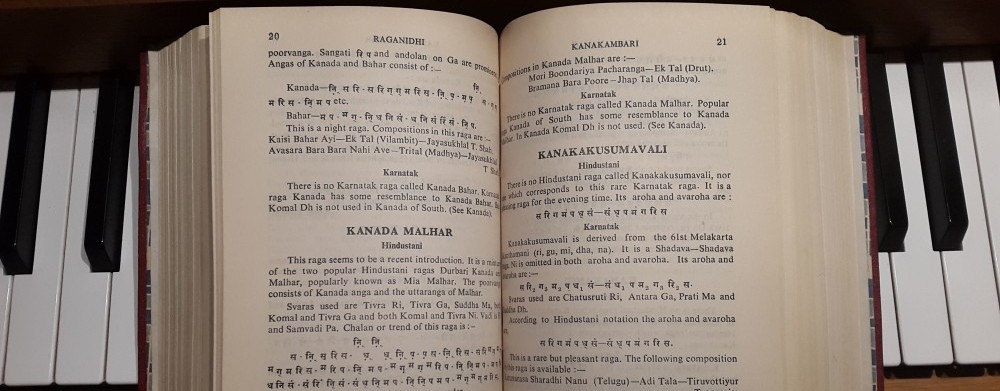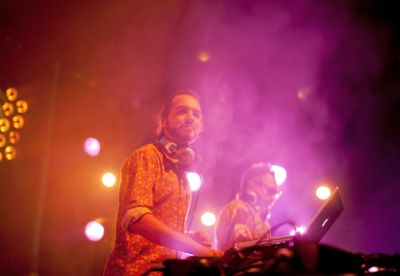Voor even herrezen en levensecht op het podium. Umm Kulthum, als hologram in het leven geroepen ter gelegenheid van de openingsceremonie van de MBC Egypt Channels in oktober 2012.
Category Archives: World Music
Happy 2013! Muziekfeest zonder grenzen: zeven uur exotisch grooven!
Tabla genius Zakir Hussain: “music is one of the only positive energy forces left in this world”
Something we easily tend to forget is well put here by tabla genius Zakir Hussain. When asked “what is music?” he reflects on the positive energy of music, while questioning at the same time the mindset of politicians who only hear the drums of war.
My Top 10 of World Music releases 2012
01. Shankar Tucker – The Shrutibox (Vol.2)
02. Wu Man and Master Musicians from the Silk Route – Borderlands, Music of Central Asia, Vol. 10
03. Ebo Taylor – Appia Kwa Bridge
04. Debashish Bhattacharya – Madeira
05. Alex Wilson – Salsa Veritas
06. Kala Ramnath – Aavartan
07. Blue Flamingo – A Search for CMS
08. Estrella Morente – Autorretrato
09. Saskia Rao de Haas – The Indian Cello
10. The Touré-Raichel Collective – The Tel Aviv Session
I also published this list at Concertzender’s weblog, where you can find 2012 world music top 10 lists by other afficionados.
What were your highlights among new releases in 2012? Let me know, I’d love to hear about it!
R.I.P. Ravi Shankar (7 Apr. 1920 – 11 Dec. 2012)
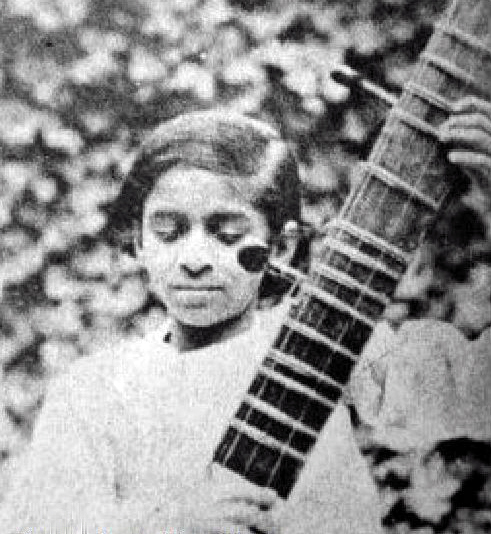
“When I am silent, I fall into the place where everything is music.”
Rumi (1207-1273)
Concerten fenomenaal slidegitarist Debashish Bhattacharya in Amsterdam (08/12/2012), Utrecht (09/12/2012) en Brussel (10/12/2012)
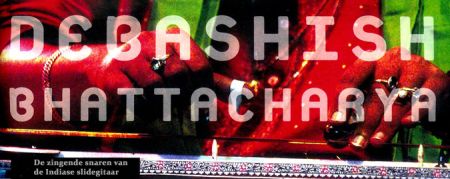
Begin december 2012 is India’s slidegitaar-fenomeen Debashish Bhattacharya op tournee in Nederland en België: op zaterdagavond 8 december in het Tropentheater in Amsterdam, op zondagmiddag 9 december bij RASA in Utrecht en op maandagavond 10 december bij BOZAR in Brussel. Al eerder besteedde ik op m’n blog aandacht aan deze fantastische ragamuzikant uit Calcutta en ook in enkele van mijn programma’s op de Concertzender en bij de Wereldomroep gaf ik ruim baan aan zijn zingende snarenspel.
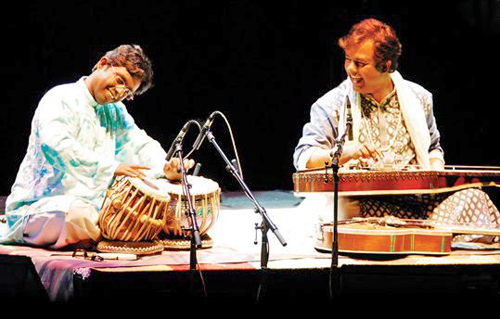
Ragaslider Debashish (rechts) en z’n broer Subashish (links) op tabla
Bij zijn optredens wordt Debashish ritmisch ondersteund door z’n broer Subashish, een van India’s beste tablaspelers. De optredens in het Tropentheater, bij RASA en in BOZAR zijn een must voor de liefhebber van de Noord-Indiase raga, maar ook voor muziekliefhebbers die minder vertrouwd zijn met ragamuziek is een optreden van Debashish Bhattacharya absoluut een geweldige muzikale belevenis.
Kala Ramnath’s musical odyssey ‘Aavartan’ is marvellous!
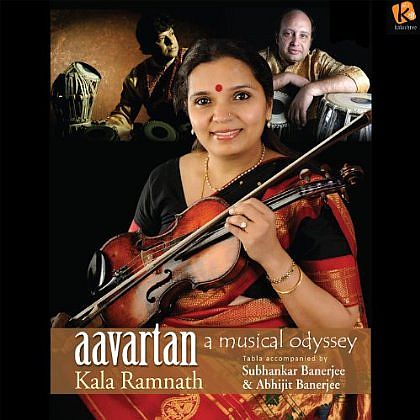
Summer 2012 saw Kala Ramnath‘s latest release Aavartan: A Musical Odyssey, Dawn to Dusk – 1&2. I have many of Kala’s albums and I’m very familiar with her style of playing. Still, I’m pleasantly surprised once more by what Kala has to offer on Aavartan (Cycle). Yes, as expected, her violin sings and sounds magnificent, but what strikes me is the overall depth and maturity of her refined playing, a special treat one can enjoy here for almost two hours! The recordings were done in Mumbai for Kala’s own label Kalashree. The quality of the recordings is excellent, adding up nicely to the listening experience. Kala is supported on tabla by two famous players: Abhijit Banerjee on Dusk to Dawn-1 and Subhankar Banerjee on Dusk to Dawn-2. Both albums contain six ragas, each having a particular connection with a certain time of the day or night, reflecting an ideational system based on a daily cycle of changes that occur in our own body and mind, arousing and stimulating different emotions and moods. In other words: Kala presents 12 ragas for the twenty-four hours of the day according to the time theory in Indian classical music. On Dusk to Dawn-1 Kala plays the raags Bhairav (6-8AM), Jaunpuri (8-10AM), Deshkar (10-12PM), Miya Ki Sarang (12-2PM), Patdeepki (2-4PM) and Din Ki Puriya (4-6PM). On Dusk to Dawn-2 Kala plays Hameer (6-8PM), Jaijaivanti (8-10PM), Shankara (10-12AM), Malkauns (12-2AM), Darbari (2-4AM) and Bhatiyar (4-6AM). For a great listening experience I highly recommend these recordings by the Singing Violin of India!
Kala Ramnath plays her own violin concerto with The Residence Orchestra/The Hague Philharmonic
As part of the Holland-India Festivals The Hague world famous ragaviolinist Kala Ramnath from Mumbai visits The Netherlands to play her own violin concerto, titled The seasons of India, accompanied by The Residence Orchestra/The Hague Philharmonic. The concert will be held at the Conservatory of The Hague on Saturday 10 November 2012. I wonder how Kala’s bending of notes and colourful ragaplaying style combine with the sounds of a symphony orchestra.
I found a clip on YouTube that might give a clue. It shows Kala playing with the London Symphony Strings.
Kala playing with the London Symphony Strings
I portrayed Kala for Radio Netherlands and for the Concertzender. To listen to my radio-portrayal of Kala in 2008, click here.
Excerpt of my video-recording of Kala’s concert at RASA in Utrecht, April 2006
2 Nov.’12 Amsterdam Tropentheater concert tabla legend Zakir Hussain sold out in a beat
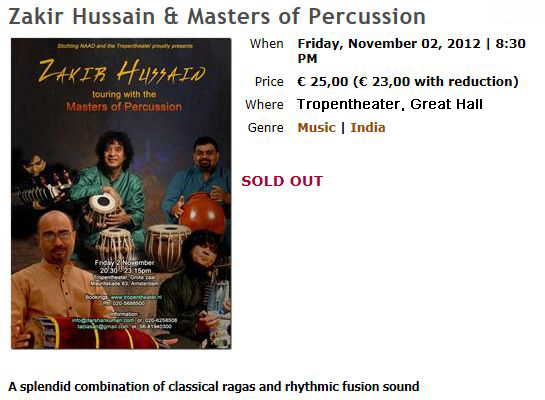
On Friday 2 November 2012 legendary world famous tabla player Zakir Hussain will play with his Masters of Percussion group in the Great Hall of Amsterdam’s Tropentheater. Zakir Hussain will be joined on stage by young brilliant sitar player Niladri Kumar and other great musicians on a variety of instruments including the dholak, ghatam, tabla, kanjira, bansuri and sarangi. For evryone going to the concert it will be a sheer delight to witness the tabla genius playing again in The Netherlands. It will be the third time that I’ll visit a concert of him in Amsterdam. Last time was in 2008 when Zakir Hussain performed with The Masters of Percussion at the Amsterdam India Festival and somewhere in the early nineties (or was it even earlier?) I saw the king of Indian beats performing live on stage in Amsterdam with sarangi player Ustad Sultan Khan. All were memorable great events, due to Zakir’s charisma and overwhelming musical powers. There’s so much said and written about him in books, newspapers, articles and all over the web… what can I add here? Let me just add a quite recent (and quite funny) two-part video-interview with him – shown below – and maybe this one good advise: always book early when Zakir Hussain is playing in your neighbourhood! The concert in Amsterdam I’m going to on 2 November was sold out in a beat. I’m glad I won’t miss one beat of it coming Friday! 🙂
What a wonderful sound! John Cage for Balinese gamelan
I like to hear more of this ‘John Cage for Balinese gamelan’-project. Sounds wonderful!
